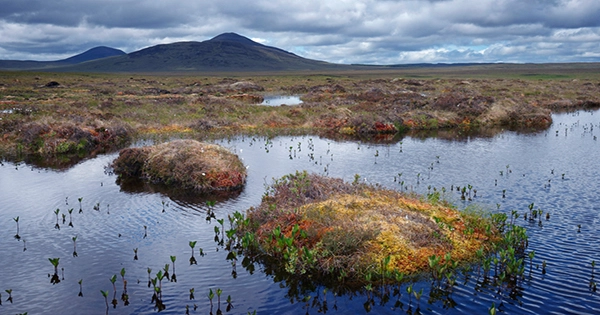A well-known carbon sink, salt marshes can help with carbon sequestration. They are also dynamic ecosystems, though, and they adjust to the tides and the seasons.
Using Sage Lot Pond on Cape Cod as a reference marsh, recent research out of the Marine Biological Laboratory (MBL) Ecosystems Center demonstrates how seasonal cycles and the ocean’s ebb and flow affect the amount of carbon stored in New England marshes.
In a recent study, we looked at how the temperature of the air and sediment affected marsh respiration, which is the process by which organic carbon is converted to carbon dioxide. This can aid in our understanding of how a marsh’s respiration rates are affected by climate change, particularly warming, according to Babson College associate professor of environmental science Joanna Carey. Carey worked alongside Jianwu (Jim) Tang, a senior scientist at MBL, and Kevin Kroeger, a supervisory research chemist with the U.S. Geological Survey, on this study while she was an MBL postdoctoral researcher.
Between 2014 and 2016, Carey and her coworkers observed gas exchange from the Sage Lot Pond marsh system during a 16-month period. They set up static gas chambers on six plots, ranging from low-elevation marsh to high-elevation marsh (which is only occasionally flooded by the tides) (which is flooded twice daily with tides). For four minutes straight, the chambers continuously recorded the amount of carbon dioxide released into the environment. They were able to collect data illustrating the full range of seasonal temperatures the marsh experienced due to the wide date range and diverse elevations.
After analyzing the data, they discovered a correlation between each degree of warming and an exponential rise in carbon dioxide emissions.
“But what was surprising is that we found higher temperature sensitivity in the low marsh habitat. That means for each degree of warming, there was significantly more carbon dioxide released from the marsh at lower elevation relative to the high-marsh habitat,” Carey said.
Since sea level rise is causing the transfer of high-marsh to low-marsh ecosystems, it had thought beneficial for natural carbon sequestration for low marshes to store more carbon. The sequestration effect of low marshes may be reduced as the planet warms, however, carbon dioxide is released there at a much quicker rate as the temperature rises, according to this research.
Sage Lot Pond is a marsh that has been extensively quantified, and numerous research has covered a range of carbon movement-related topics. The study also showed that, in comparison to direct vertical fluxes to the air, this Sage Lot marsh ecosystem loses a substantially greater amount of respired carbon to the ocean via ebbing tides. This is significant because, despite the fact that some of the respired carbon will be returned to the atmosphere as carbon dioxide flux from the sea, a portion is likely to remain dissolved in the ocean for an extended period of time, possibly thousands of years, increasing the salt marshes’ capacity to store carbon.
By utilizing comparable methods to examine nitrogen loading and emissions, Carey and her colleagues plan to continue their research in this area. Additionally, they want to see whether their findings apply to other marshes. Monitoring the fate of carbon and other gases in marshes provides a more complete picture that can guide strategies to combat climate change and aid in our comprehension of what will happen to these important ecosystems.















